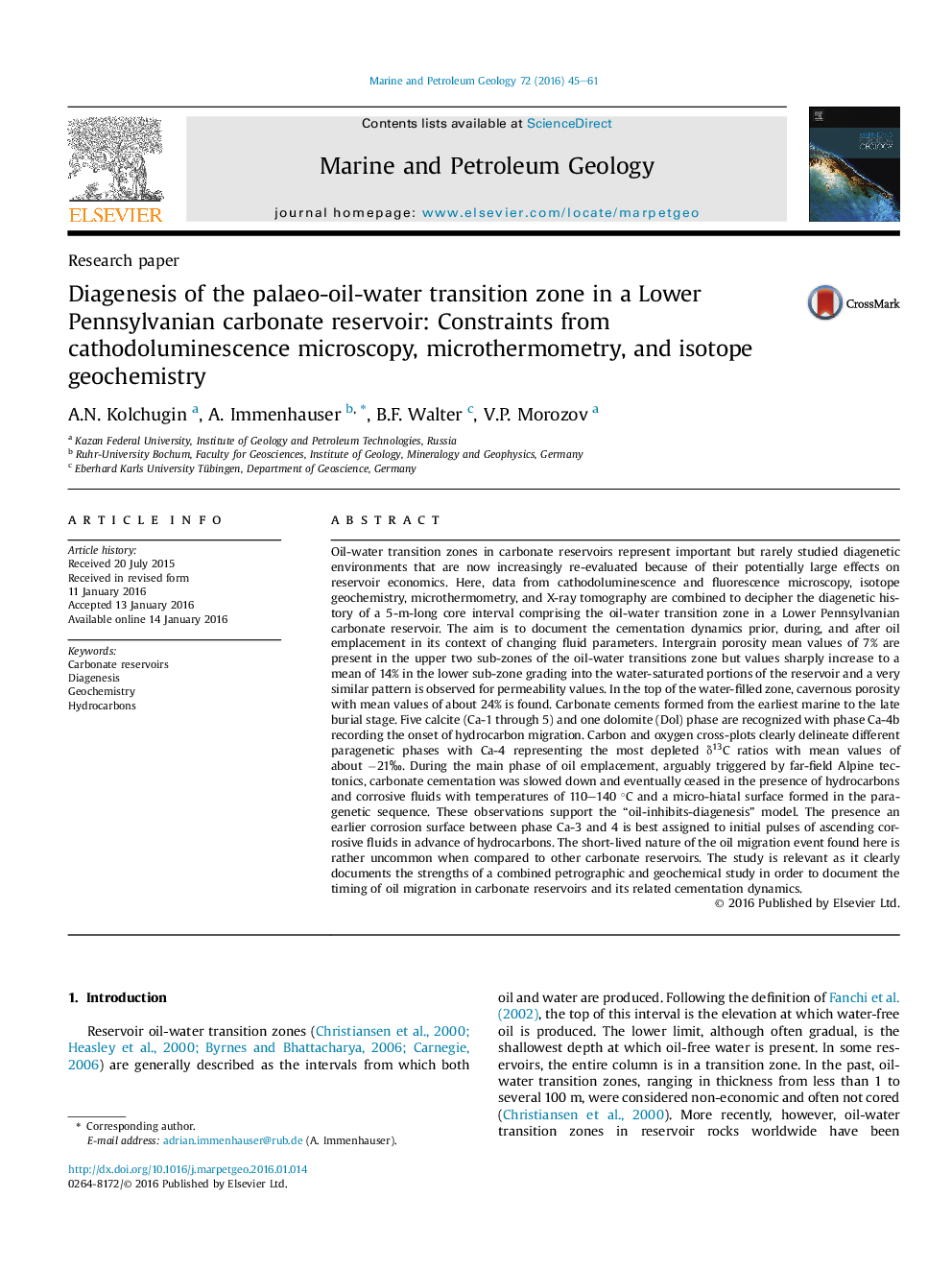| کد مقاله | کد نشریه | سال انتشار | مقاله انگلیسی | نسخه تمام متن |
|---|---|---|---|---|
| 6434475 | 1637155 | 2016 | 17 صفحه PDF | دانلود رایگان |
- Very detailed petrographic data set providing insight in oil migration patterns and fluid properties.
- Oil migration is limited to one paragenetic phase, a rather unusual feature.
- The data set supports the “oil-inhibits-diagenesis-model” but also specifies boundary conditions.
- Data on the subsurface Carboniferous from Russia are extremely scarce in the open literature.
Oil-water transition zones in carbonate reservoirs represent important but rarely studied diagenetic environments that are now increasingly re-evaluated because of their potentially large effects on reservoir economics. Here, data from cathodoluminescence and fluorescence microscopy, isotope geochemistry, microthermometry, and X-ray tomography are combined to decipher the diagenetic history of a 5-m-long core interval comprising the oil-water transition zone in a Lower Pennsylvanian carbonate reservoir. The aim is to document the cementation dynamics prior, during, and after oil emplacement in its context of changing fluid parameters. Intergrain porosity mean values of 7% are present in the upper two sub-zones of the oil-water transitions zone but values sharply increase to a mean of 14% in the lower sub-zone grading into the water-saturated portions of the reservoir and a very similar pattern is observed for permeability values. In the top of the water-filled zone, cavernous porosity with mean values of about 24% is found. Carbonate cements formed from the earliest marine to the late burial stage. Five calcite (Ca-1 through 5) and one dolomite (Dol) phase are recognized with phase Ca-4b recording the onset of hydrocarbon migration. Carbon and oxygen cross-plots clearly delineate different paragenetic phases with Ca-4 representing the most depleted δ13C ratios with mean values of about â21â°. During the main phase of oil emplacement, arguably triggered by far-field Alpine tectonics, carbonate cementation was slowed down and eventually ceased in the presence of hydrocarbons and corrosive fluids with temperatures of 110-140 °C and a micro-hiatal surface formed in the paragenetic sequence. These observations support the “oil-inhibits-diagenesis” model. The presence an earlier corrosion surface between phase Ca-3 and 4 is best assigned to initial pulses of ascending corrosive fluids in advance of hydrocarbons. The short-lived nature of the oil migration event found here is rather uncommon when compared to other carbonate reservoirs. The study is relevant as it clearly documents the strengths of a combined petrographic and geochemical study in order to document the timing of oil migration in carbonate reservoirs and its related cementation dynamics.
Journal: Marine and Petroleum Geology - Volume 72, April 2016, Pages 45-61
